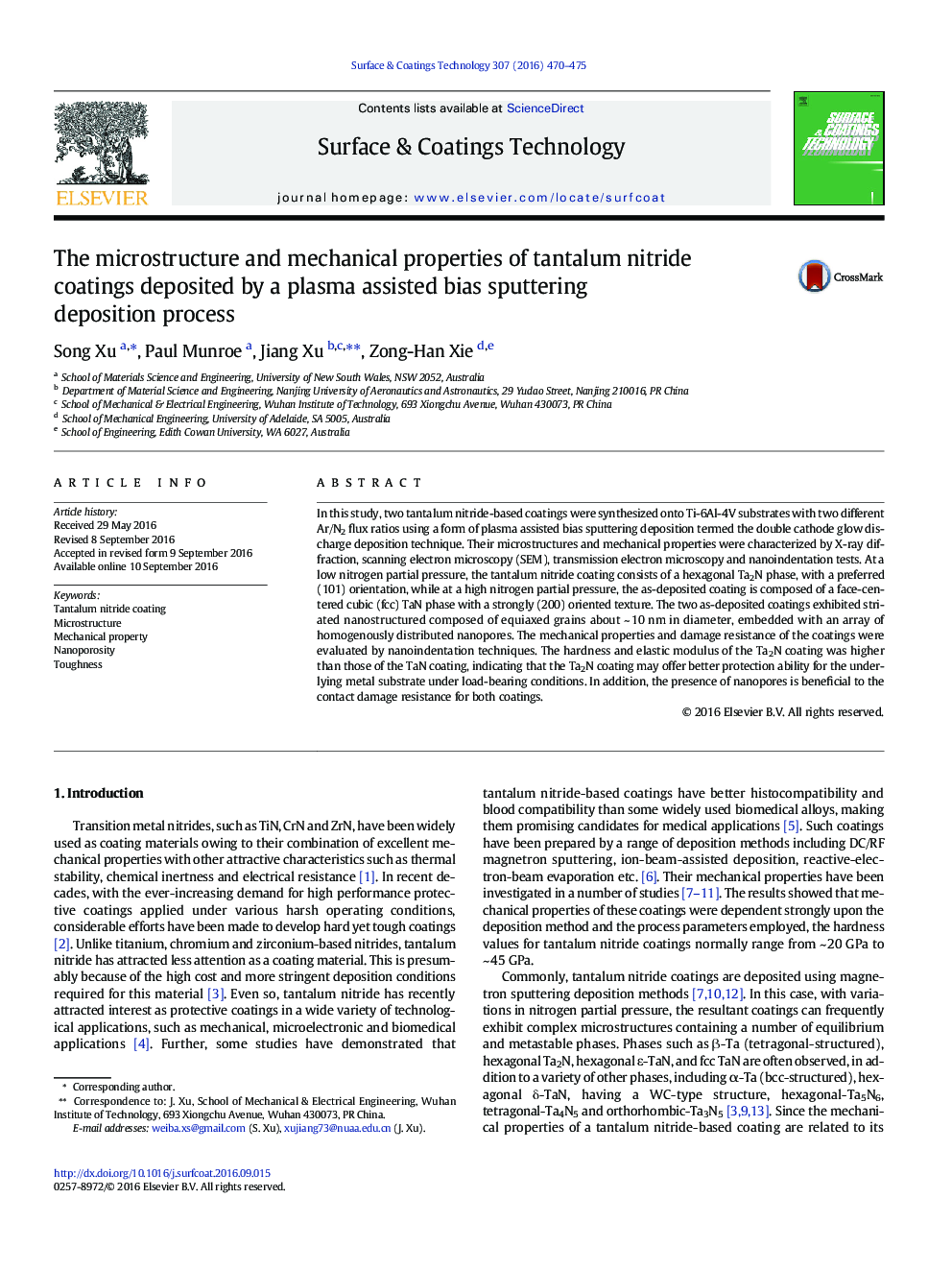| Article ID | Journal | Published Year | Pages | File Type |
|---|---|---|---|---|
| 6481457 | Surface and Coatings Technology | 2016 | 6 Pages |
â¢Tantalum nitride-based coatings with a nanoporous structure were deposited using double cathode glow discharge deposition.â¢Even though the tantalum nitride coatings studied here include the presence of nanopores, a high hardness is achieved.â¢The tantalum nitride coatings studied here show good wear resistance.â¢The damage tolerance of the tantalum nitride coatings were greatly improved due to the presence of nanopores.
In this study, two tantalum nitride-based coatings were synthesized onto Ti-6Al-4V substrates with two different Ar/N2 flux ratios using a form of plasma assisted bias sputtering deposition termed the double cathode glow discharge deposition technique. Their microstructures and mechanical properties were characterized by X-ray diffraction, scanning electron microscopy (SEM), transmission electron microscopy and nanoindentation tests. At a low nitrogen partial pressure, the tantalum nitride coating consists of a hexagonal Ta2N phase, with a preferred (101) orientation, while at a high nitrogen partial pressure, the as-deposited coating is composed of a face-centered cubic (fcc) TaN phase with a strongly (200) oriented texture. The two as-deposited coatings exhibited striated nanostructured composed of equiaxed grains about ~Â 10Â nm in diameter, embedded with an array of homogenously distributed nanopores. The mechanical properties and damage resistance of the coatings were evaluated by nanoindentation techniques. The hardness and elastic modulus of the Ta2N coating was higher than those of the TaN coating, indicating that the Ta2N coating may offer better protection ability for the underlying metal substrate under load-bearing conditions. In addition, the presence of nanopores is beneficial to the contact damage resistance for both coatings.
